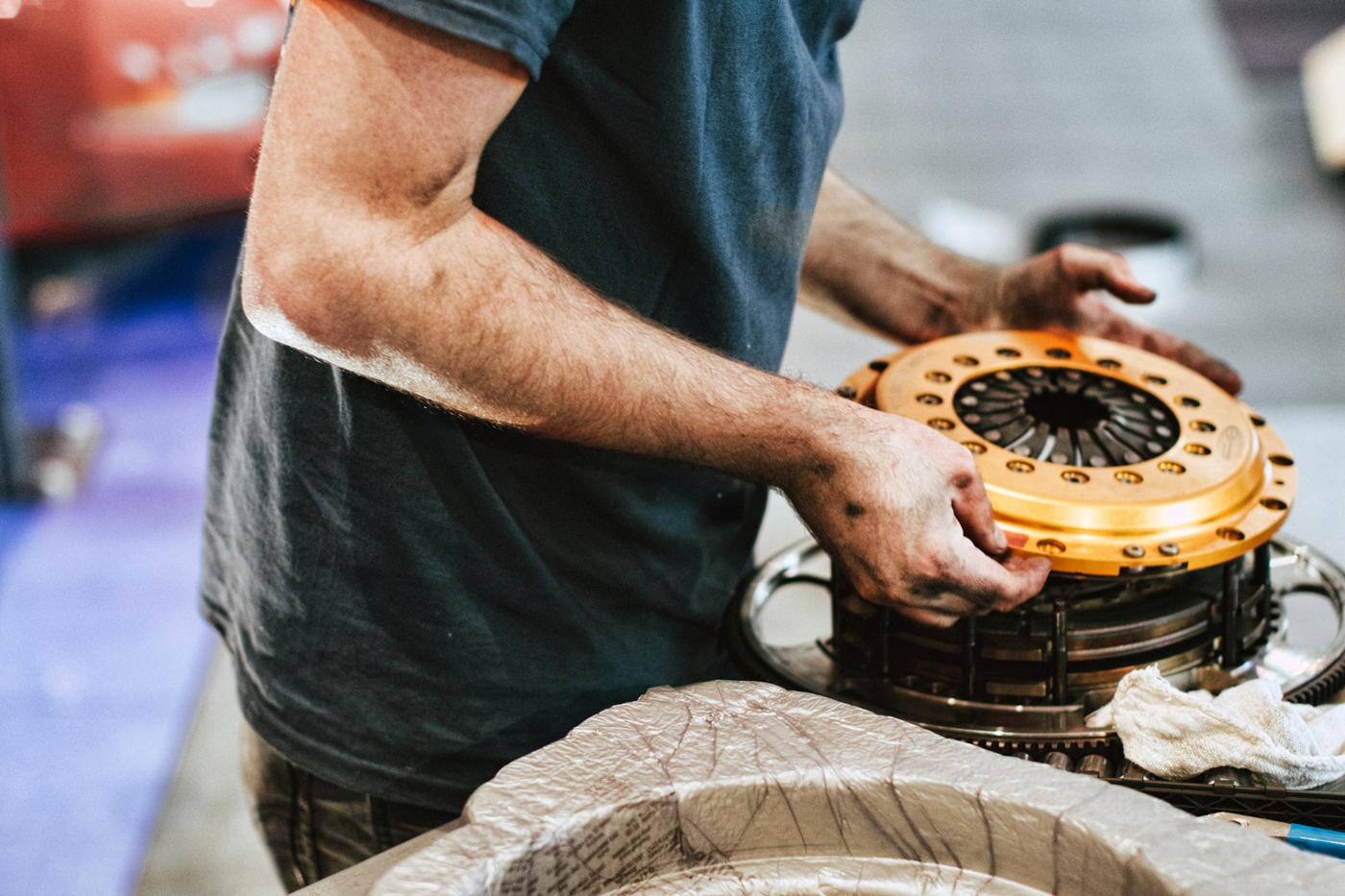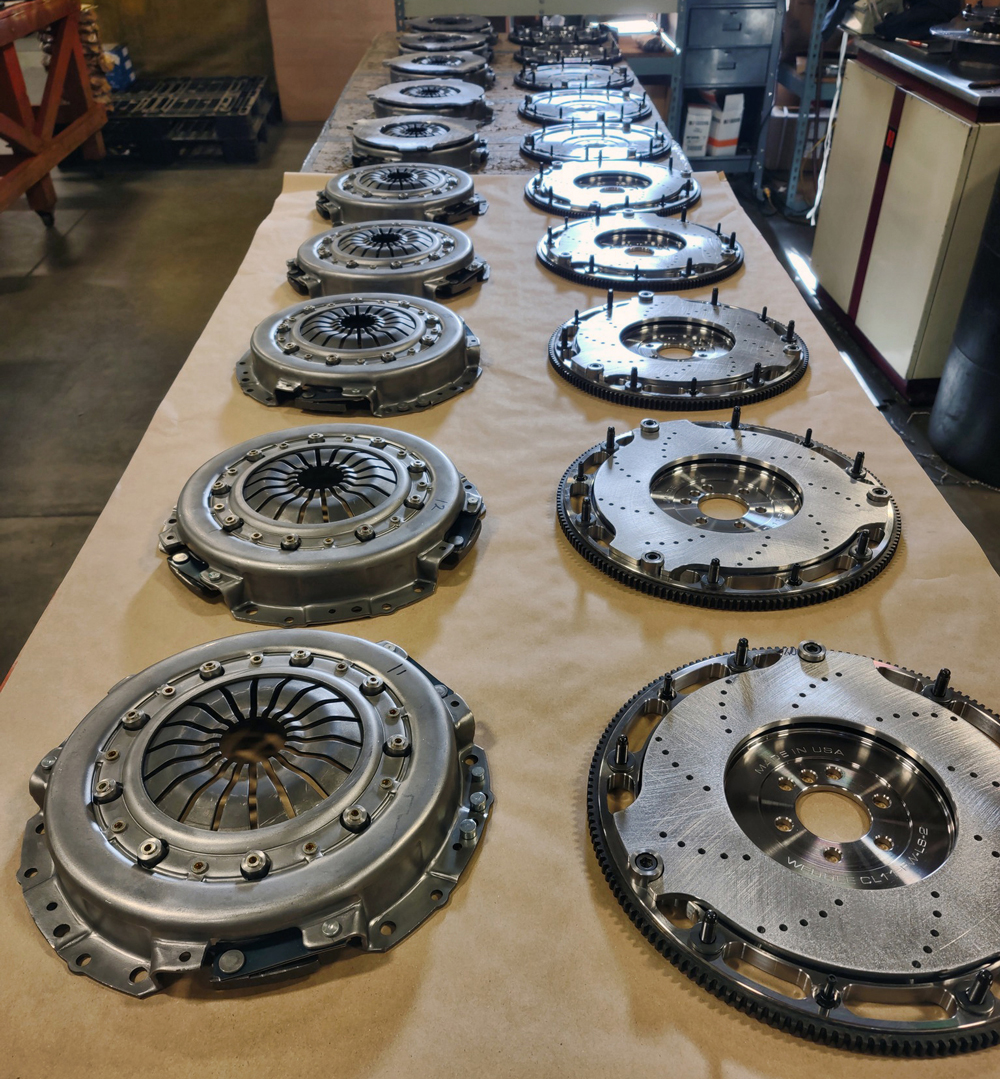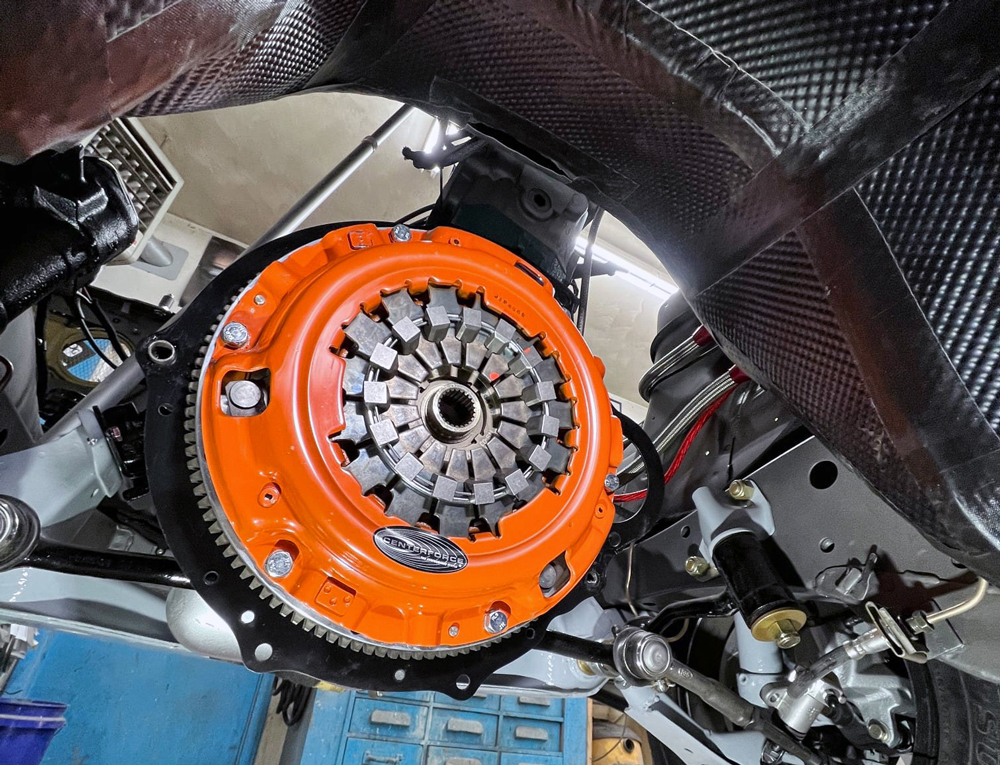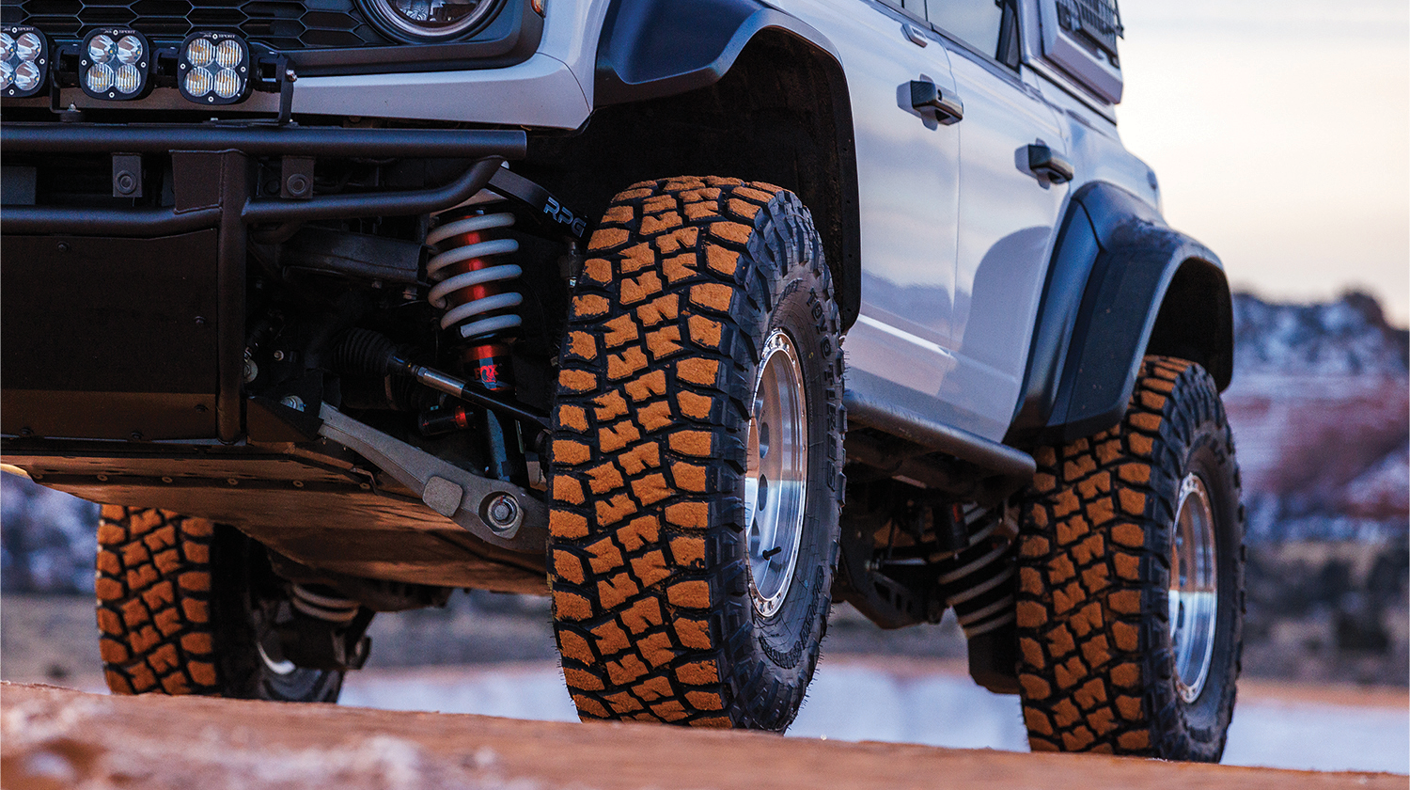PRI Education: Race Car Clutch Selection

When upgrading to a performance clutch, the most important factors to consider are the intended use of the vehicle and the racer’s driving style. You should also take into account the vehicle’s weight, horsepower, and torque numbers.
Choosing the optimal part can be a daunting task, but this guide provides racers with the knowledge they need to make the right purchase the first time around.
Selecting the right clutch for your build can be challenging. With so many clutch options on the market today, it can be tough to know which clutch is the best for your race car and driving style. Clutches aren’t a one-size-fits-all product, and as such, work best when appropriately paired with the vehicle’s intended use.
To help consumers make an informed decision and get the most out of their three-pedal vehicle, we put together a guide to take some of the guesswork out of what could be a daunting task.
Types Of Clutches
The most significant differences in clutches are the type of friction disc material and the number of discs used. Depending on the application and horsepower numbers, various clutch disc materials can be used to handle different power outputs, absorb more heat, and take the abuse thrown at them. The clutch disc is also responsible for delivering a smooth application of power when the clutch is transitioning from disengaged to engaged.
The main types of friction materials used in today’s performance clutches include:
Organic: This material is often used for daily driving and stock/OEM replacements for smooth engagement and longevity.
Heavy-Duty Organic: This material is ideal for most performance applications and heavy-duty uses, such as autocross and road racing categories. The disc can typically engage more smoothly while handling higher temperatures with this premium material.
Segmented Friction Configuration: This option uses a segmented design to increase pressure per square inch. The design, in conjunction with organic materials, offers great on- and off-track performance, making it an ideal combination for street/strip and street/track applications.
Ceramic/Metallic: This material is ideal for most racing applications—including drag racing, or big power off-road racing vehicles—as it is designed for repeated clutch engagements and high heat.
Single or Dual-Disc Clutches?
Dual-disc clutches handle more power. As their name implies, dual-disc clutches use two discs instead of one. The additional disc allows them to have a significantly higher torque rating, which makes dual-discs attractive for significantly modified diesel trucks, sports cars, drag race cars, or other vehicles with major torque and horsepower.

There are some characteristics of dual-disc clutches to consider before opting for one, however. The significant increase in torque load ratings can sometimes come at the cost of drivability. Smaller dual-disc clutches have a more “on-or-off” feel, making them “grabbier” and more challenging to use. Feathering the clutch on race-style dual-discs can be more difficult, and smoothly driving in heavy traffic or taking off from stops is almost impossible.
This is why some manufacturers employ designs meant to reduce drawbacks, making dual-disc clutches a suitable option for race vehicles that also drive on the street.
How To Find The Right Clutch For Your Application
Many motorsports enthusiasts opt for three-pedal cars for a variety of racing disciplines, and having the correct clutch to match the vehicle’s intended use makes all the difference. This clutch guide is designed to help determine clutch selection for manual transmission motorsports and what to look for in a clutch:
Stock Replacement: Most single-disc, entry-level clutch kits in this category feature high-quality friction materials ideal for applications with stock engines or mild power increases from bolt-on modifications. It provides much-needed increased holding capacity while still allowing light pedal effort and smooth engagement.
Off-Roading: For truck and off-road applications—or any application with added weight or mild performance modifications—look for products that offer superb holding power and a light pedal feel, such as full facing discs and pressure plates with centrifugal weights. Typically, weight is the enemy in racing, but in this category, the added weight of a high inertia billet steel flywheel can offer more resistance to stalling at idle and can keep the engine running at lower rpm’s.

Street/Strip: If driving to and from the race track is your goal, look for a pressure plate and disc combination that offers ultimate holding power and performance without sacrificing pedal effort and driver control.
Circle Track: In circle track—and other applications where weight savings is key—look for a single-disc clutch specifically designed to offer lightweight, low-inertia performance and reduce engine rotating mass. One example is the Light Metal Clutch by Centerforce, which features pressure plates machined from high-strength aircraft-grade billet aluminum with a unique heat-treated replaceable friction surface.
Road Course/Autocross: Autocross and road course racers build their vehicles in different configurations and horsepower levels, but whether the build is wild or mild, many autocross enthusiasts succeed with economical, high-quality twin-disc clutch systems. Look for discs that utilize solid hubs to reduce the rotational weight on the input shaft for quick and clean shifts, making a significant difference on the autocross track.
Drag Racing: Drag racers who make big power need the best holding capacity to transfer power to the ground. Not to mention, drag car components need to handle the high temperatures caused by the repeated high-power cycles. This is why a premium, dual-disc clutch system is recommended for drag racing applications. There are a few different options in this category, but systems typically feature a pair of segmented discs with premium, organic friction material capable of holding up to 1,600 lbs.-ft. of torque. Many options can still retain a soft pedal feel and remain streetable.
While this guide should help you consider your available options, be sure to consult with your manufacturer or builder to find what’s best for your race vehicle.
Trent McGee is the marketing manager at Centerforce Clutches in Prescott, Arizona, and has been a freelance contributor to various automotive enthusiast publications for more than 25 years. Though his interests include anything that runs on gas, he is an avid off-road enthusiast and spends much of his time exploring backcountry trails all over the Southwest.
 MEMBERSHIP LOGIN
MEMBERSHIP LOGIN JOIN PRI
JOIN PRI


